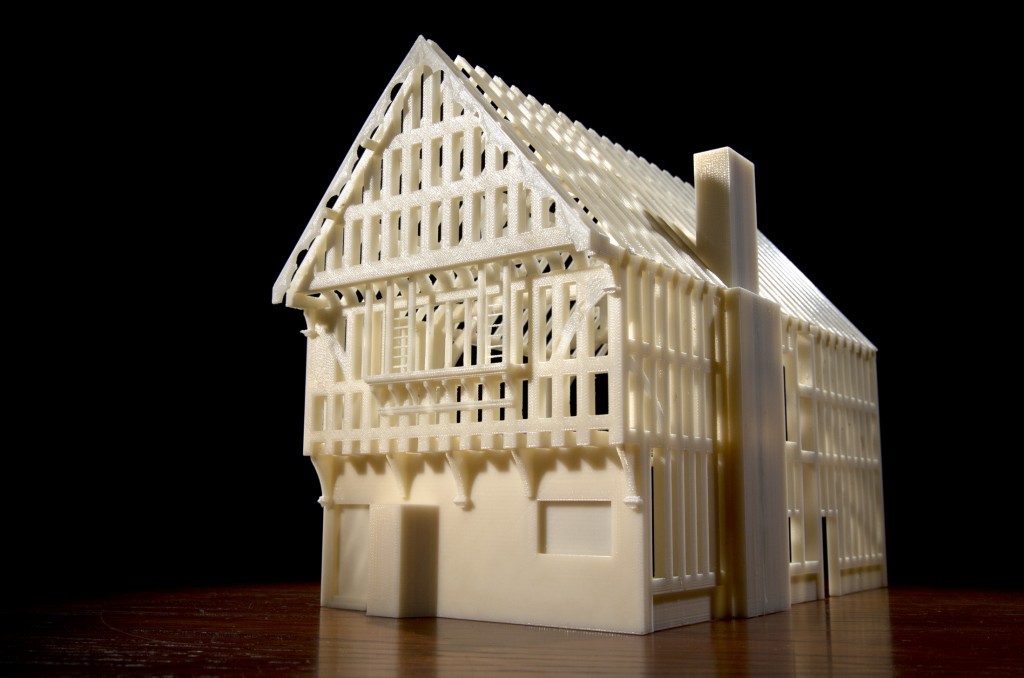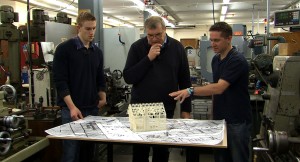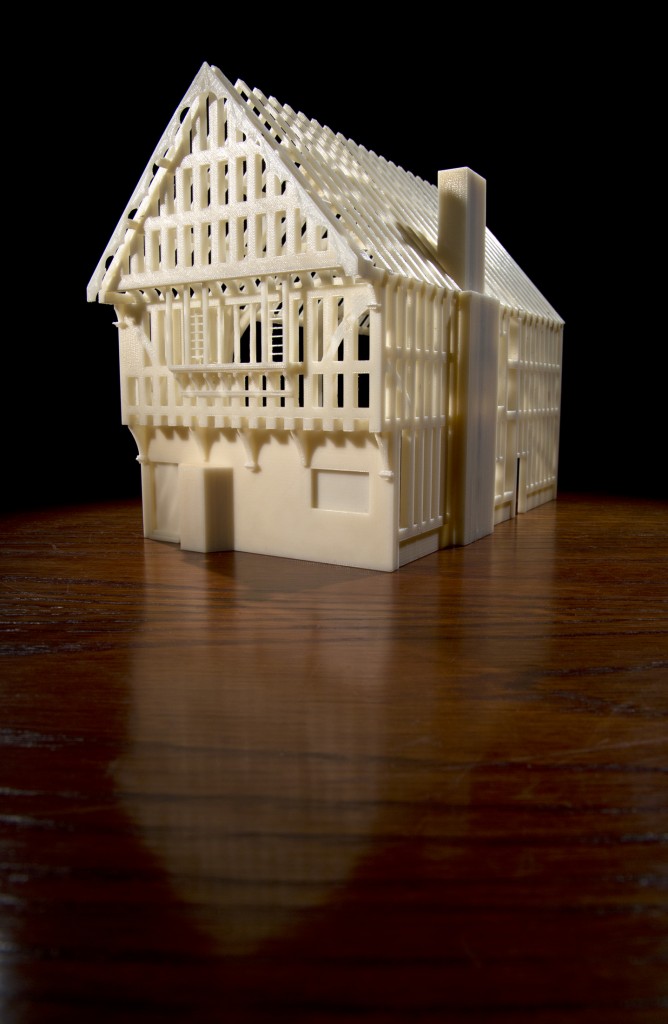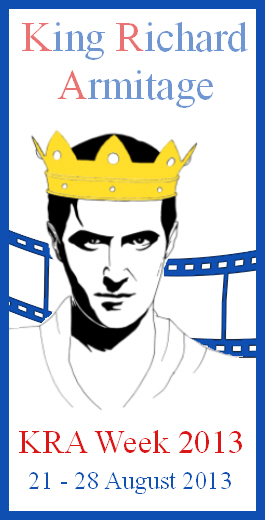Blue Boar Inn, Leicester

The reconstructed Blue Board Inn as a physical model produced on the University of Leicester’s 3D printer – Credit: University of Leicester
That the details about the Blue Boar Inn in Leicester are preserved, are due to the fact that Henry Goddard, a member of the Goddard family, an important architectural dynasty in Leicester, meticulously documented the building before its deconstruction in the year 1836.
Richard Buckley, researching other material in the rich family archives of the Goddard family, came accross those notes and sketches and recognised them as the lost timber framed building of the Blue Boar Inn, where King Richard III stayed in the year 1485, before he left for the battlefield of Bosworth, where he died.
Richard Buckley about his research and phenomenal find:
In March 1836, the Inn was demolished – and until now, the only evidence for what it looked like consisted of a pair of engravings made by Leicestershire artist John Flower in 1826.
This find is not merely an architectural sensation, but also allows us insights into the last days of King Richard III. As Richard Buckley summarises it:
The Blue Boar Inn was one of medieval Leicester’s principal inns – a place where aristocrats and wealthy merchants would stay when moving around the country. I suppose it was like the Grand Hotel of its time.
This discovery allows us to see how King Richard III traveled, what he found a suitable accomodation and gives us a short glimpse into where he stayed and what he did in his last days. Even the location of the room, where he is presumed to have stayed, can be located in the house.
Legend has it that Richard did not like sleeping in strange beds, so had his own brought down from Nottingham in ‘knock-down’ form so it could be put together at the inn. Of course, he never returned to claim it – so the bed became a bit of a tourist haunt in the succeeding centuries and eventually ended up in the collections of the county museum service at Donington le Heath Manor House.
In later years, 1605, Mrs. Clark, the landlady of the inn at that time, was murdered and robbed of £ 300 in gold coins of King Richard III’s reign, which were said to have been part of the kings hidden treasure stored in a secret compartment in his bed.

Creator of the CAD model Steffan Davies (left), Richard Buckley (centre) and Dave Thompson (right) who produced the physical model using the University’s rapid prototyping machine – Credit: University of Leicester
The building of the Blue Boar Inn is believed to having been built on older foundations in the mid-15th century on the medieval Leicester High Street (now Highcross Street).
Some sources give the original name of the inn as the “White Boar Inn”, which specially connects it to King Richard III, as this was his personal insignia and the badge he wore into battle.
The inn – understandably – changed name after the Battle of Bosworth, to avoid any reprisals by the new Tudor king Henry VII.
It was a large and elaborately decorated timber building and was said to have been the most decorative of Leicester’s houses in the late 15th century.
The Blue Boar Inn seems to have consisted of further buildings with
several wings surrounding a courtyard, with a hall, a kitchen and stabling for horses.
Richard Buckley presents his discovery of the “Blue Boar Inn in Leicester in the following video (YouTube – University of Leicester):
Richard Buckley, co-director of the University of Leicester Archaeological Services, describes his findings:
When I was looking through this notebook, what was thrilling about it was that the drawings were so detailed. They showed how the building was put together – the timber framing, the joints, pegholes – all annotated with measurements in feet and inches.
It made me think that perhaps we could produce a reconstruction of the Blue Boar Inn to doern standards. It was then a question of finding somebody who could do it.
Here comes in Seffan Davies, an architect already with previous experience in historic building drawings, who was able to reconstruct the building as a CAD-drawing (CAD = computer-aided desing), which formed the basis of a 3D model.
The Department of Physiscs and Astronomy of the University of Leicester has a 3D printer, which now was fed with the information and details, to build a model of the Blue Boar Inn:

The reconstructed Blue Board Inn as a physical model produced on the University of Leicester’s 3D printer – Credit: University of Leicester
The team hopes to exhibit the model to the public in due course, to show the building, where King Richard III is presumed to have stayed in the year 1485 and which modern technology was able to bring to life once again.





